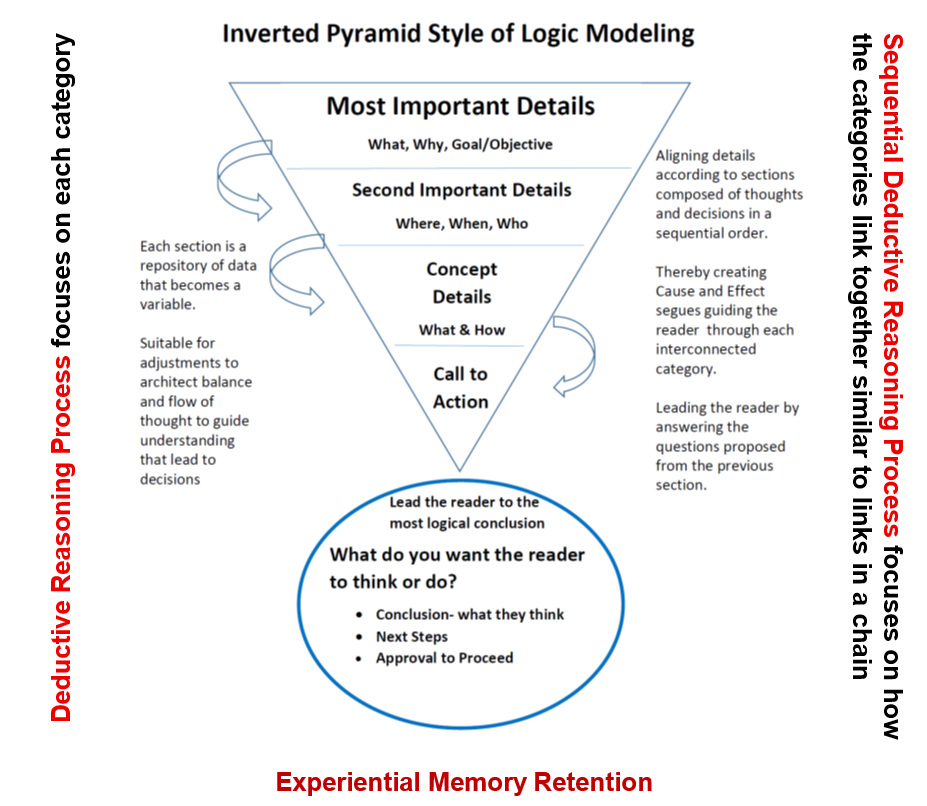12 Course Model 2 (continued): Development – constructing the idea into a concept
Communications as a system of purposeful logic.
Composing an idea into a concept is an engineering process of concise thought and focus. Great ideas will die or fade away if they are not communicated well. No matter how superb an idea is… it will need people to make it happen.
Decision makers have little time to treasure hunt through reams of copy to find facts and insight from which to focus on to validate their decisions. Innovation Principles trains students how to build competent conceptual prototypes that guide thought and deliver clarity to encourage approval and lead action.
The logic model shown below is for configuring concepts, writing briefs, and composing directions. The stages of the model uses chunking to create a cognitive cadence that guides readers to embrace knowledge in a systematic manner to kindle consideration and understanding. Each section establishes a perception (Deductive Reasoning) that interconnects with the next category (Sequential Deductive Reasoning) of information. This sequential step-by-step order of categories interconnects sections of details to encourage episodic memory. When the reader cognitively immerses themself in the holistic model they incite experiential memory retention in the hippocampus region of the brain. The hippocampus helps engineer lateral thinking and encourages long term memory of the content that proposes reason, facts, direction and action. This approach integrates systems thinking into the model by successively categorizing content to organize details in a controlled process to trail-blaze thought to culminate into consideration. (17)

Media Attributions
- Inverted Pyramid Style of Logic Modeling © David Crawley is licensed under a CC BY (Attribution) license

